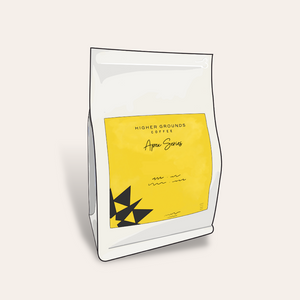Three main processing methods dominate in the world of specialty coffee:
Washed coffees, representing the majority of the world’s specialty coffee, are depulped (removed from the fruit) and then fermented in large tanks, a process that breaks down the mucilage before the beans are dried and milled.
Dry processed coffees remain inside the fruit (coffee cherry) throughout the fermentation and drying process, only being broken out when the fruit is completely dry. This variation moves up the drying step to much earlier in the process—just after picking—and eliminates the washing/soaking completely, so that the coffee bean is in contact with its fruity cherry throughout the fermentation stage, ultimately much longer than traditionally-processed coffee.
The whole coffee cherries are dried, sometimes on raised beds and sometimes directly on the ground, and once they reach the ideal moisture level (no higher than 12%), their entire hulls are removed mechanically to reveal the green beans. This extended contact between seed and fruit results in—surprise!—a much fruitier coffee. Sometimes the fruit exhibits itself in citrusy characteristics; other times with intense berry notes.
Dry processing is often relied on in areas of the world with little or no access to water, such as Ethiopia and Brazil. What’s more, dry processing uses no water at all, in contrast to the 35-60 liters per dry parchment (dry but unhulled coffee beans) used in traditional processing. To be fair, the water used in processing only represents a portion of overall water use for producing a coffee plant, but every little bit of conservation helps. Not only is naturally-processed coffee an environmentally-friendly choice, but a delicious one as well.
Honey processed coffees are depulped and then dried with some, but not all, of the mucilage--which is sticky and honey-like--left on the parchment. These coffees are often very sweet and can also exhibit lovely, delicate fruit and floral notes.


